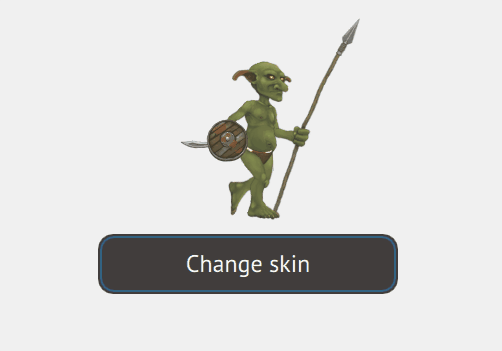

- #TEXTUREPACKER WITH SKIN MAC OS X#
- #TEXTUREPACKER WITH SKIN SKIN#
- #TEXTUREPACKER WITH SKIN OFFLINE#
- #TEXTUREPACKER WITH SKIN WINDOWS#
Which makes it an instant winner if your asset workflow involves those other, lesser, OSes.
#TEXTUREPACKER WITH SKIN WINDOWS#
Versions are available for recent OS X, Windows back to XP, and Ubuntu Linux. So in lieu of actually producing that, let’s just tell you:Īre you creating sprite sheets as a part of a workflow? Running just about anywhere, targeted just about anywhere? Then you need to look into TexturePacker carefully … and if you have before and it didn’t crank you up, check out the sparkly new version 2.4.0 again! Unfortunately, time for that just has not turned up … and it’s not likely to in the foreseeable future.
#TEXTUREPACKER WITH SKIN MAC OS X#
So for an embarrassingly long time now, we’ve been meaning to get around to doing a head to head review of the two main Mac OS X sprite sheet creators for cocos2d, Zwoptex and TexturePacker. We’re having a smidgen of trouble coming up with a compelling use case for this kind of thing, but hey, it’s worth taking a look at just to see how they went about approaching the problem! The system also allows you to do simple searches for subviews like jQuery with CSS selectors…
#TEXTUREPACKER WITH SKIN SKIN#
It allows you to load a CSS file and skin UIView elements.
GAViewStyling classes provide a means to drive UIView cosmetic properties via CSS declarations in an HTML document…Īnd CSSApply is another take on the same kind of thing:Įxtremely lightweight skinning system for iOS.

One of those WebKit features is the CSS engine. One of the neat parts about having a library, GAJavaScript, that makes it easier to access JavaScript is that using WebKit functionality becomes easier. GAViewStyling goes with the GAJavaScript project we mentioned earlier: But if that does sound interesting to you, here’s a couple projects to check out: … no, it never really occurred to us either. H/t: struck you “hey, wouldn’t it be a great idea to be able to style my app’s interface with CSS?” Pretty cool, huh? Well, it just went 1.0 final, so check it out: Source on github, documentation at wiki.Īnd as an aside, for another take on supersizing your logging goodness, check out iConsole part of the excellent Charcoal Design collection!
#TEXTUREPACKER WITH SKIN OFFLINE#

NSLogger is a high perfomance logging utility which displays traces emitted by client applications running on Mac OS X or iOS (iPhone OS). Remember that NSLogger thing we mentioned almost a year ago? If not, this is what it is:


 0 kommentar(er)
0 kommentar(er)
